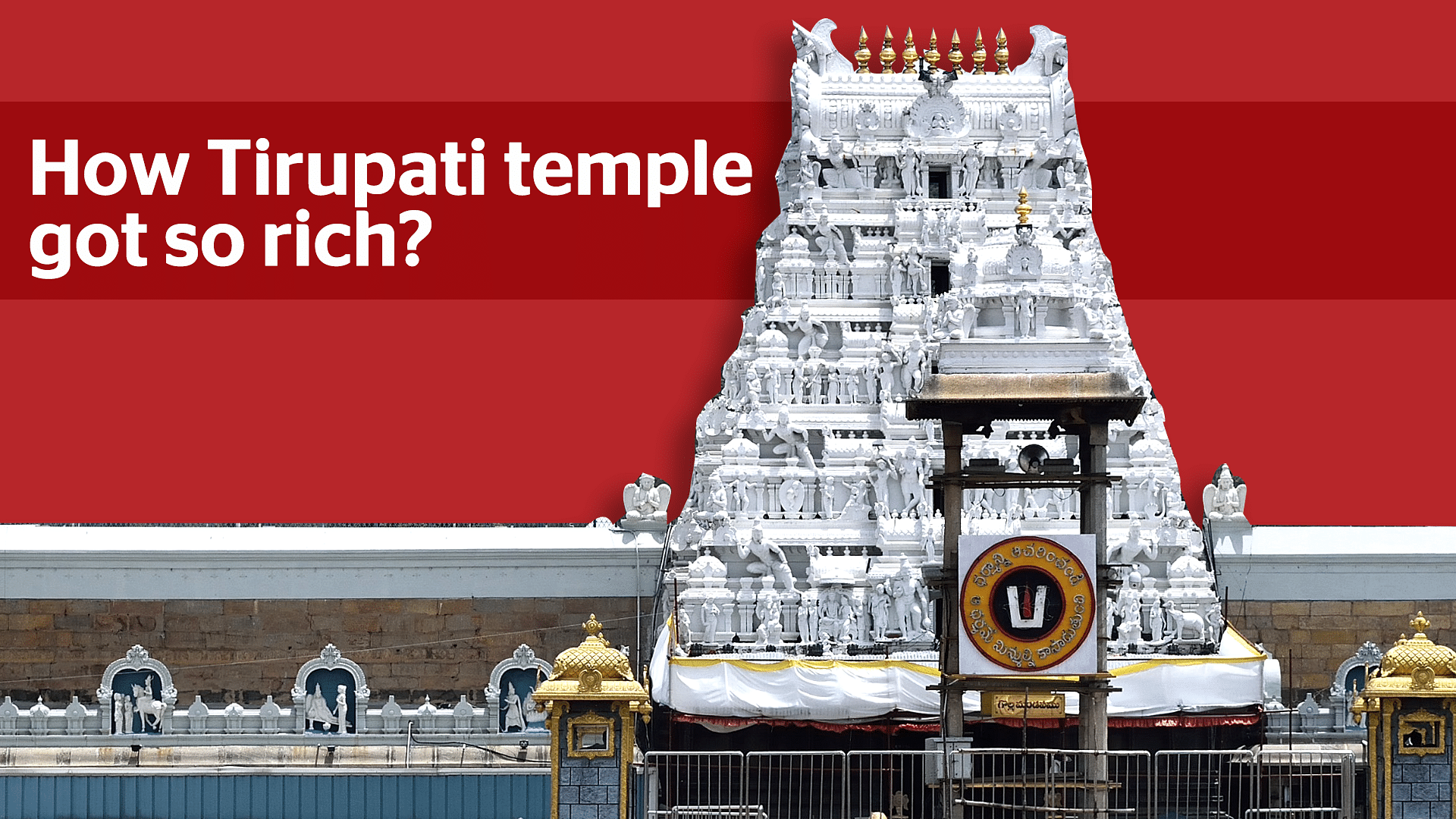Videos
How Tirupati Temple Came To Be Among The Richest In The World

How Tirupati got to be so freakishly wealthy.
Transcript:
Pure gold reserves of over 9,000 kg, an annual revenue of Rs 1,000-1,200 crore from ‘hundi' collections, Rs 12,000 crore in fixed deposits in various banks, and earning around Rs 850 crore as interest.
These colossal numbers offer but a glimpse into the riches of the richest deity on earth – Shri Venkateshwara Swamy of Tirupati.
But what did it take for the Tirupati temple to accumulate such giant wealth?
In short, how did it get so rich?
This has been explained well in an academic paper by one Burton Stein, who looked at how the royalty back in the day, especially the Vijayanagara kings, funded and managed the temple so as to turn it into a treasure trove.
Vijayanagara patronage, from the times of Krishnadevaraya to Achyuta Deva Raya and later, Sadasiva Raya, towards the temple, with involvement not just in administration but also oversight and management of temple wealth and property built up the fortunes of this hill shrine.
There were essentially two kinds of resources that contributed to the temple’s wealth.
One - land grants
And two - monetary donations.
Land grants were of various types - from land that could be fully managed by temple authorities to those where a majority of the crop would go to the temple and a small part to the cultivator. In other kinds, a small section of the income went to the temple.
Four decades of Krishnadevaraya’s rule saw almost a hundred villages added to this kitty of grants.
Next came the large monetary endowments or donations, usually in lieu of some ritual to be performed at the temple. The temple could invest the money and use the returns for its needs.
What’s key is that temple functionaries and local merchants invested in their economic ecosystem, made large monetary endowments, often surpassing state/royal investment.
For instance, between 1542 and 1568, the contribution of the citizens and merchants of Tirupati was 8 per cent more than that of the royals, and that of the temple functionaries was 3.5 per cent more.
So while the royals perhaps contributed to make a political statement, the merchants and citizens did so to enrich the ecosystem.
They also put in money - in the form of funds - in exchange for rights to sell the consecrated food or prasada. Some of them would also place part of the food for which they received rights with leaseholders in exchange for money. And given that Tirupati in that era had become the most visited temple, the demand for prasada was high, which led to greater contribution by the local folk to the temple.
At about 1509 and thereafter, one-fourth of all endowments to the temple was from contributions by temple functionaries.
So this combination of village grants and monetary contributions allowed the temple authorities to invest in long-term capital expenditure and nurture an economically vibrant ecosystem around the temple region.
In this way, the temple instituted a virtuous cycle of endowment, investment, trade, and attractive rituals while also benefiting the devotees.
But jump four centuries ahead and you have tales of inscriptions sand blasted, lands given away to no return, mismanagement of funds... the list is endless.
How nice it would be to take a leaf out of history, to see how the Rayas and their men managed to embellish and empower a temple, and replicate the model so that we have many more reasons to celebrate the Indic way of life.
*
Catch all our video content. Subscribe to Swarajya.
Support Swarajya's 50 Ground Reports Project & Sponsor A Story
Every general election Swarajya does a 50 ground reports project.
Aimed only at serious readers and those who appreciate the nuances of political undercurrents, the project provides a sense of India's electoral landscape. As you know, these reports are produced after considerable investment of travel, time and effort on the ground.
This time too we've kicked off the project in style and have covered over 30 constituencies already. If you're someone who appreciates such work and have enjoyed our coverage please consider sponsoring a ground report for just Rs 2999 to Rs 19,999 - it goes a long way in helping us produce more quality reportage.
You can also back this project by becoming a subscriber for as little as Rs 999 - so do click on this links and choose a plan that suits you and back us.
Click below to contribute.
Latest